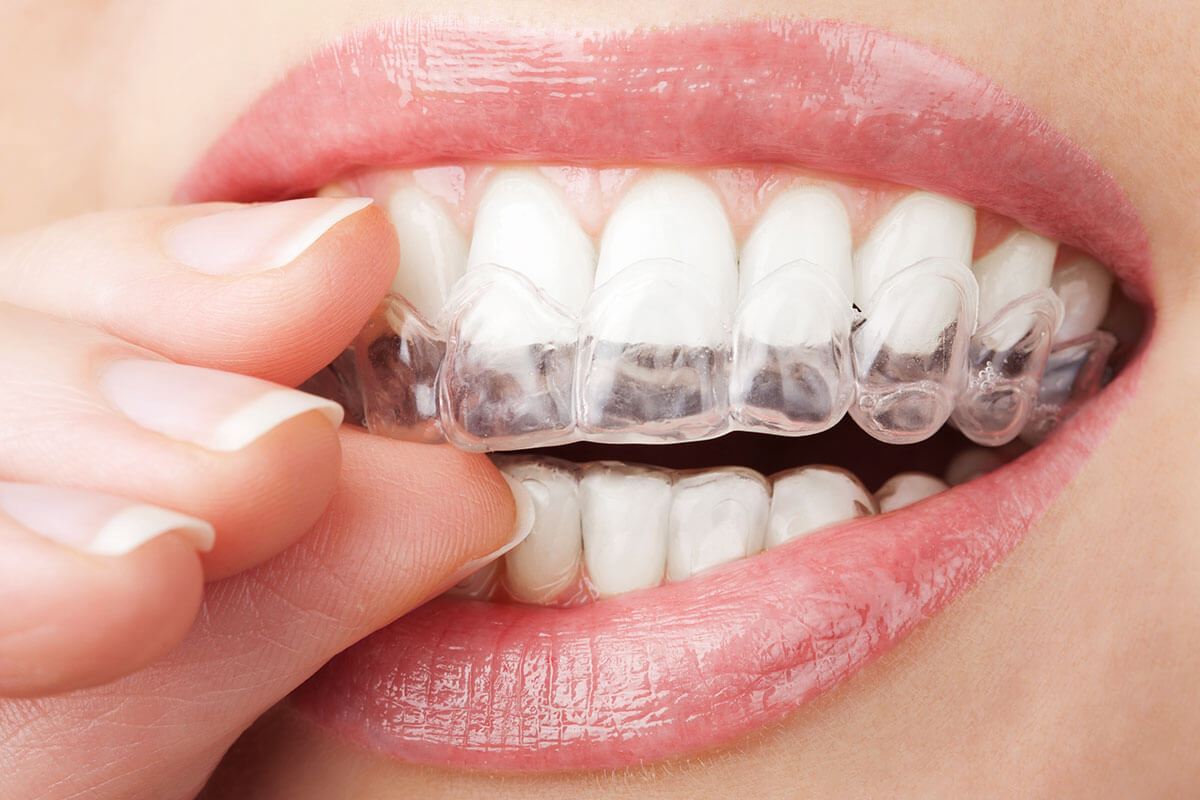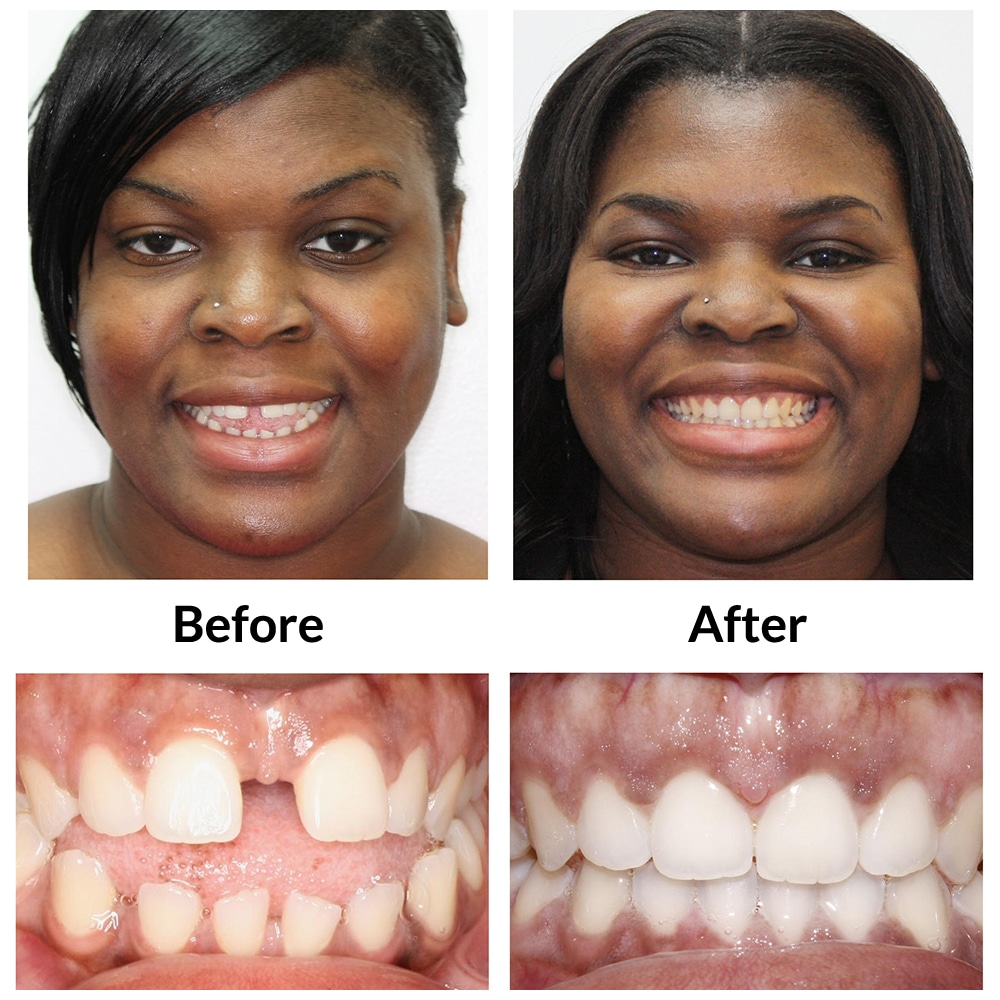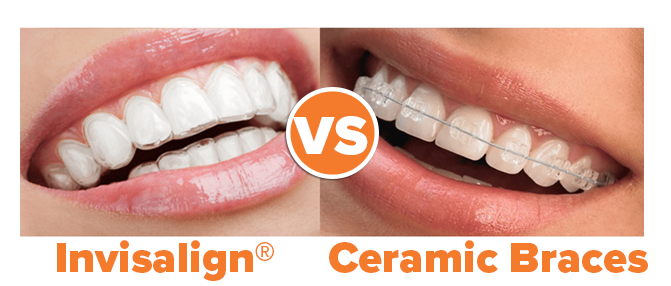How Invisalign Functions: Your Guide to Clear Aligners and Their Effectiveness
How Invisalign Functions: Your Guide to Clear Aligners and Their Effectiveness
Blog Article
Invisalign vs. Typical Braces: Which Option Is Right for You?
When taking into consideration orthodontic therapy, the selection between Invisalign and conventional dental braces offers numerous important aspects that warrant cautious assessment. Invisalign uses a very discreet choice with detachable aligners, while typical dental braces provide a more visible yet efficient option for serious imbalance. Each option encompasses distinct benefits and drawbacks connected to aesthetic appeals, convenience, therapy duration, and expense. Comprehending these nuances is vital for making an educated choice that lines up with your personal preferences and lifestyle. The inquiry continues to be: which alternative will ideal satisfy your orthodontic requirements and expectations?
Overview of Therapy Choices

In contrast, conventional dental braces contain metal braces and wires that are bonded to the teeth. This technique uses continual pressure gradually to attain positioning. While effective for complicated orthodontic issues, standard dental braces require regular visits for modifications and can pose difficulties in preserving dental health due to the problem of cleansing about cables and braces.
Both alternatives have their qualities, and the choice frequently hinges on particular dental problems, way of living choices, and patient conformity. Inevitably, speaking with an orthodontic expert is vital for determining the most ideal treatment plan customized to individual needs. Understanding the nuances of each alternative can considerably influence the general success of orthodontic treatment.
Visual Considerations
A substantial aspect affecting the selection in between Invisalign and standard dental braces is the visual charm each therapy provides. Invisalign aligners are crafted from clear plastic, making them essentially unnoticeable when put on. This very discreet look is especially appealing to teens and adults who might really feel awkward about their orthodontic treatment. The capacity to preserve a natural smile throughout the alignment procedure can significantly improve the individual's confidence in social and expert setups.
On the other hand, standard braces contain steel brackets and cords, which can be much more noticeable. While advancements in orthodontic innovation have caused the advancement of smaller braces and colored elastics, standard braces still preserve an even more noticeable profile. For some people, the visibility of dental braces may hinder them from seeking essential therapy.
Ultimately, the selection between Invisalign and typical braces might hinge on individual preferences concerning appearances. Clients that prioritize discernment typically lean towards Invisalign, while those that are much less concerned about visibility might select conventional dental braces. Comprehending the visual implications of each choice is essential for making an educated choice that aligns with one's way of life and choices.
Convenience and Convenience

In terms of convenience, Invisalign aligners are removable, making it possible for individuals to enjoy their favorite foods without constraint and preserve optimal oral hygiene. Cleaning and flossing are simplified, as the aligners can be taken out throughout these regimens, whereas conventional braces call for cautious maneuvering around brackets and cords.
In addition, Invisalign's modern system allows for fewer orthodontic check outs. Patients usually get multiple collections of aligners at the same time, which can streamline the therapy procedure and decrease time invested in the orthodontist's chair. In contrast, traditional braces demand routine adjustments, making them much less practical for those with active routines. Invisalign. On the whole, the comfort and convenience of Invisalign make it an enticing choice for several people seeking orthodontic therapy.
Treatment Period and Effectiveness
While both Invisalign and typical braces are reliable in remedying oral imbalances, the duration of treatment can vary significantly between the 2 options. Generally, Invisalign therapy can take anywhere from 12 to 18 months, depending on the intricacy of the case. The clear aligners work by progressively moving teeth into their desired settings, and normal follow-ups with an orthodontist assistance make certain progress remains on track.
In contrast, standard dental braces usually require a longer commitment, typically varying from 18 check that months to 3 years. This results from their set nature and the use of brackets and wires, which can be extra reliable for extreme imbalances and complicated instances (Invisalign). The treatment effectiveness of conventional braces is well-documented, as they enable for exact changes and higher control over tooth activity
Ultimately, the choice between Invisalign and conventional braces might depend upon both the anticipated treatment duration and the details oral problems at hand. Consulting with an orthodontist is vital, as they can give customized referrals based on private needs, making sure the chosen method straightens with preferred results and timeframes.
Expense Comparison and Insurance Coverage Choices
Expense plays a considerable function in the decision-making procedure for people considering orthodontic therapy, whether choosing Invisalign or traditional dental braces. Typically, the price of Invisalign varieties from $3,000 to $8,000, while traditional dental braces commonly cost in between $2,000 and $6,000. Aspects influencing these costs include the intricacy of the situation, the period of treatment, and geographical location.
Insurance policy coverage can substantially impact out-of-pocket expenditures. Numerous oral insurance coverage plans provide partial insurance coverage for orthodontic treatments, yet the specifics can vary extensively. It is vital for patients to examine their insurance coverage to identify the level of coverage for either option. Normally, traditional dental braces may be a lot more frequently covered by insurance coverage plans contrasted to Invisalign, which some insurance companies categorize as an aesthetic procedure.
In addition, numerous orthodontic practices offer versatile repayment plans, making both therapy choices extra accessible. Clients ought to ask about prospective financing choices and discount rates for in advance repayments. Reviewing the total cost, consisting of insurance advantages and layaway plan, is important for making a notified decision that lines up with both visual choices and spending plan considerations.

Conclusion
In summary, the option between Invisalign and standard dental braces depends upon numerous variables, consisting of aesthetic preferences, comfort, therapy period, and price. Invisalign uses a discreet, removable choice that helps with dental hygiene and dietary flexibility, go to the website while typical dental braces might be a lot more appropriate for complicated dental issues and commonly come at a lower cost factor. Eventually, appointment with an orthodontist is vital to analyze individual scenarios and figure out one of the most appropriate therapy alternative for accomplishing optimum dental placement.
When taking into consideration orthodontic therapy, the option in between Invisalign and standard braces presents a number of vital variables that warrant careful assessment.Comparing Invisalign and conventional braces exposes unique therapy options for orthodontic modification.While both Invisalign and traditional braces are efficient in remedying dental imbalances, the duration of therapy can vary dramatically between the two options.Price plays a considerable duty in the decision-making process for people considering orthodontic therapy, whether deciding for Invisalign or conventional dental braces.In summary, the option in between Invisalign and traditional braces pivots on several factors, including visual choices, comfort, treatment duration, and price.
Report this page